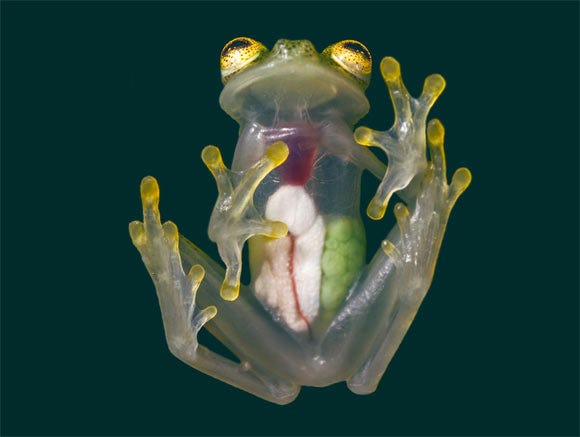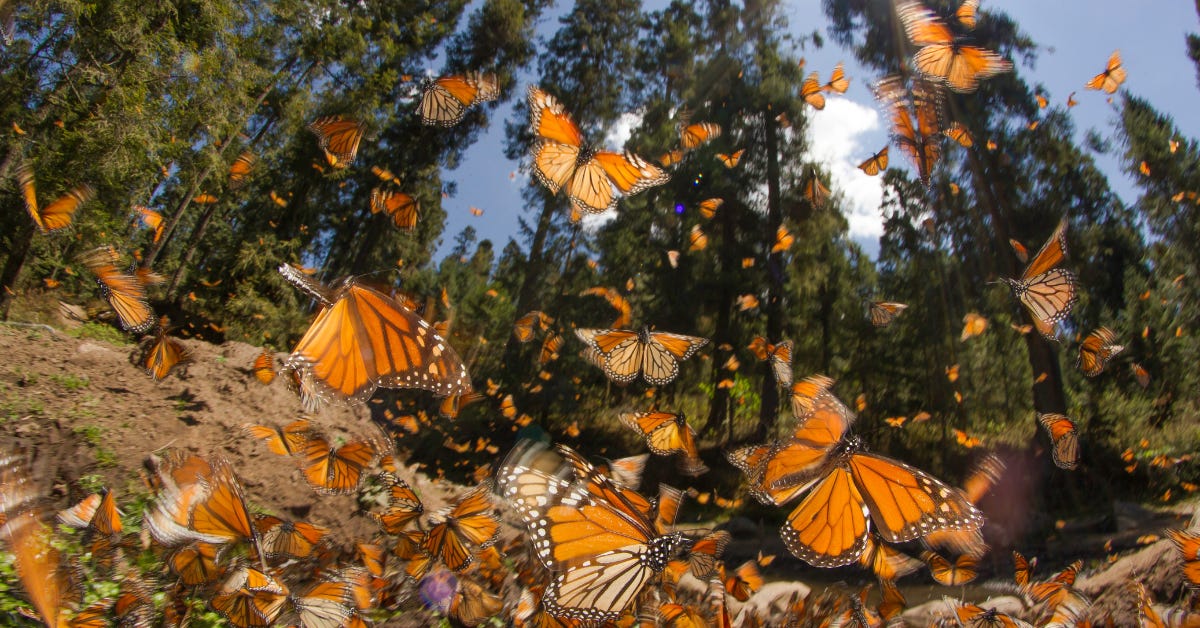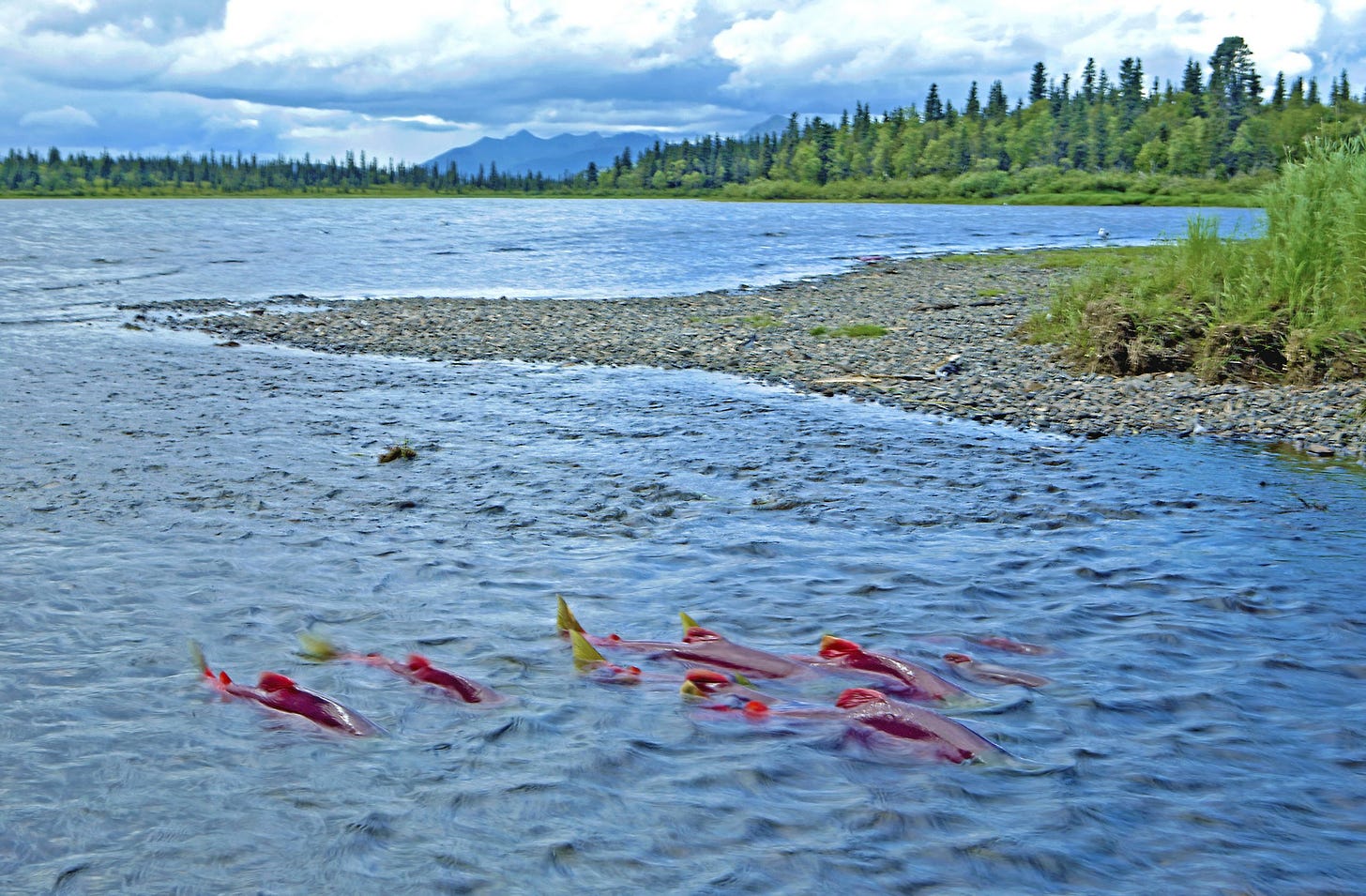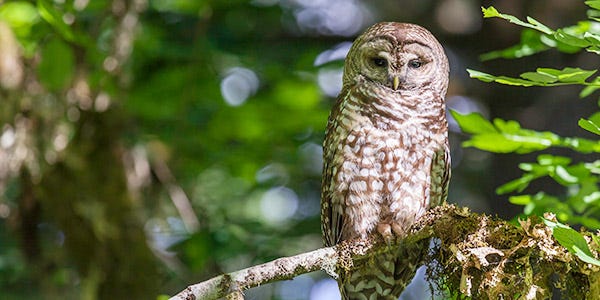Reminders for Humans is a monthly series that explores a natural phenomena, and how I’m applying its wisdom to my own human life. I’m a scientist, and also a gushy poet who loves metaphors. Expect both.

By far, the dumbest insult of all time is being called sensitive.
This is not to say that I have avoided the sting of this descriptor, when it’s been lobbed my way. Far from it. Arguably the most cutting of recess name-calling involved the S-word, and even worse- the TS-word: too sensitive. But with distance and hindsight, it’s curiously, objectively funny to be called too sensitive as an insult.
Because, don’t you think I agree?
Don’t you think I know that being sensitive is on the short list of worst human afflictions to possess?
What I should have said was something like,
Hey idiot, I’m on your side. I *also* think being sensitive is terrible. You think I want to feel this much? I don’t! We are on the same team, the team against Feeling Everything in Depth. The team that thinks being so easily and deeply affected by the world, sucks.
I didn’t have the words for this back then. But I have plenty of them now, and I also have a laptop, so here we are.
I studied environmental science because it was the first kind of wild love I knew. Being outside, somewhere nondescript and unexceptional, without words, quiet and encompassing; it was different. It was reprieve.
It was the way I imagine others might feel about God, from sitting on the smooth wooden pews in a church and knowing some kind of mysterious but unconditional love- and more importantly, feeling it. To be part of something so expansive and complex, something as unknown as it is known. I felt at home. I belonged there in a way I did not belong within my family. I belonged there in a way I could not belong almost anywhere else.
In Upstream, a collection of her essays, Mary Oliver writes of her early years, “In the first of these—the natural world—I felt at ease; nature was full of beauty and interest and mystery, also good and bad luck, but never misuse.”
The sensitivity of this body I inhabit has been present from the start. For years I have berated and minimized it (still do) in an attempt to push it, and its occasional partner Darkness into the periphery. For years I have pathologized it; analyzed it; created a genealogy report for the seed of it. Where was this born? How was this made?
I have an endless list of reasons for my intermittent visits from depression. Among them include:
Gene pool, being Irish (and therefore also- British Colonialism), childhood trauma, secondhand addiction, Western New York, a chemical imbalance, not enough therapy, too much therapy, being the oldest daughter, being a woman in a world built for men, too many true crime podcasts, a compulsion for writing (a real chicken or the egg kind of situation here), caring about things that are not valued or protected by people who decide what things should be valued or protected, my ancestors somehow, ghosts, spirits (they are different), not enough exercise, too much exercise, too little alone time, too much alone time, not eating enough protein, not drinking enough water, accidentally eating gluten, smiting of the Gods, bad luck, bad karma, social media, life circumstances, patriarchy and rape culture (generally), extractive capitalism (generally), the United States (generally).
I could (and do) go on. I am not yet ruling out a fantastic research project of investigative journalism where I dissect each in scrupulous detail. (I’ll call it: Why Am I Depressed?: An Anthology.)
What’s hard to deny, though, is that when my depression comes to visit, being a living organism changes. Life adopts a new filter. I require time outdoors. Poetry and silence suddenly become tantamount. Multiple cups of coffee and disassociating blankly into the distance take up hours of my days. I abruptly need to watch small and universal things: ants marching along in unison; the clouds moving over and around the sun; the night sky blinking. There are countless reasons why depression could visit, but deep down I hypothesize that the catalyst for all of them - meaning, the X-factor which speeds up the process of their reaction - is sensitivity.
Would it take me longer to feel the effects of living in 2024, being a woman, having inherited generations of stymied grief, if I wasn’t so goddamned sensitive? Probably!
Could I (metaphorically) swallow more hot garbage, for longer? Very likely, yes!
Would I be Cool Girl, finally? One can only dream.
Indicator Species
There are certain species in every ecosystem that play a very specific and important role: dying, inexplicably.
Though of course, to the trained and scientific eye it is the opposite of inexplicable. It is, in fact, very explicable. It makes a lot of sense.
They are called Indicator Species, or bioindicators. An indicator species is one whose health, abundance, and namely- decline, are often the warning signal for the greater health of the ecosystem: their struggles and waning foretell a change in the broader environment, of a novel factor that’s affecting the system. In common lexicon, we might call it the canary in the coal mine. When these species begin to dwindle, the rest of the group is in trouble, too. It’s simply a matter of time.
I feel an affinity for these guys- my strong projection muscles tell me that they are most definitely the animal version of too sensitive.

Frog populations are a common way to measure the overall health of an ecosystem. These amphibians are intimately and definitively tied to water; beginning their lives in fresh water as eggs, then gilled tadpoles. As they grow, they metamorphose: grow four legs, become terrestrial, and develop lungs- but their soft skin is absorbent, and must maintain a level of moisture that other cold-blooded animals, like reptiles, do not.
Their biological regulation is tied to their ability to absorb moisture through their skin; this dependence on water means aquatic pollutants affect them quickly and majorly. They are especially sensitive to changes in the ecosystem, so as aquatic temperature, pollutants, and contaminants change, frog populations decline. Climate change, habitat destruction, and water pollution from agricultural and other synthetic chemicals are all major causes of species threats and extinctions.

Monarch butterflies are widely loved and coveted in North America. Their short lifespans, typically only 3 to 4 weeks, are fleeting but stunning. Their deep orange and black trimming geometry are mesmerizing. One article calls them, aptly, “America’s Bald Eagle of insects.”
It takes three to four generations of Monarch butterflies to make the full migration from the top to bottom of North America. The generation which begins in Canada will never see Mexico - but if all goes as planned, their great-grandchildren will. The WWF has called this the “most highly evolved migration pattern of any known species of butterfly or moth and perhaps any known insect.” The species is an estimated one million years old, yet we still don’t completely understand how new generations of Monarchs know how to continue the migration they are born into.
Where moths and butterflies are abundant, so are other invertebrates. Because of their fragility, and their fleeting lifespans, we’re able to see changes in their native populations on a faster timeline than we might for amphibians, mammals, or birds.
Butterflies and moths are fragile by nature: both structurally, and existentially (relatable.) Many species require a specific host plant, which they have typically coevolved alongside for millennia, on which to lay their eggs. Monarchs lay their eggs on the wildflower milkweed, and when caterpillars hatch, they feed exclusively on this plant. What’s fascinating about this relationship is that milkweed leaves contain a chemical compound called cardiac glycosides, which are compounds that affect cardiac (heart) function; making these leaves toxic to most birds and mammals. However, the caterpillars are able to feed on them, and in doing so, they absorb these compounds - giving them a natural defense against predators - who avoid them because of the toxicity they carry.

Salmon are vulnerable to stressors in their environment, and their populations and ubiquity can indicate the greater health of freshwater systems.
They are one of few species of anadromous fish (meaning those which swim upstream), moving annually from saltwater to the freshwater of their origins to lay eggs and spawn, in what’s commonly called the Salmon Run. Despite their size and vigor, they’re deeply sensitive to aquatic pollution, invasive fish species, and disease.
Their abundance is directly affected by the health of their habitat, from various sources, but most obvious include dams, levees, impediments, culverts: human-made obstructions in riparian systems. They also require cold water habitats in order to survive past eggs, reproduce, and maintain thriving population levels. Climate change impacts aquatic temperatures, both oceanic and riparian, and can create more challenges for spawning salmon populations to survive.

Northern Spotted Owls are just the cutest. (Fact.)
They also tell us about the health of old growth forests- whose presence, abundance, and protection worldwide is widely agreed to be one of the most critical solutions to slowing climate change. It’s estimated that old-growth forests are some of the most effective carbon sinks on the planet. The Northern Spotted Owl is especially susceptible to environmental changes, and are particularly keen on nesting and living within the most complex of forest ecosystems: the most diverse, bountiful, and typically, ancient forests. They choose cavities in large, hollow trees for their nests, instead of building their own, and scrape out a depression in which to lay their eggs. They are extremely sensitive to soil pH and regional humidity levels, requiring a certain level of relative humidity to retain their hydration; making them a barometer for change within microclimates.
The Northern Spotted Owl’s numbers and habitat are increasingly threatened by a competing cousin, the Barred Owl, which is a scrappy generalist- able to survive in most locales, eat anything that moves, and adapt easily. They’ve been described as “flying coyotes.” While the NSO thrives on a specific diet and in mature forest pockets of the American Southwest and Pacific Northwest, the Barred Owl can (and does) survive and thrive in almost any forest. As more old-growth, primary forests in North America are threatened by sprawl and logging industries, the space for Spotted Owls shrinks, while the Barred Owl grows.
The wellness of indicator species’ acts like a vital sign for the larger ecosystem: it gives us a pulse on the status of a deeply complex web, a glimpse into the interaction of thousands of species in a given locale.
The common thread between these species is that they are not generalists. They are not scavengers, able to switch diets, or relocate to new biomes. They cannot thrive, or survive, everywhere. Through millennia of evolution, biological testing and tinkering, they are uniquely prepared to exist within their niche. This is a good thing.
In other words, their sensitivity is deeply valuable. Do Barred Owls tease the Spotted Owls in the canopy, calling them too sensitive? Are tiny mammalian eyes rolled when amphibians ask for more fresh water, please? Maybe in the Disney cartoon version of this story.
Environmental Sensitivity
In my searching, I also stumbled upon a growing body of research on the study of Environmental Sensitivity in humans- science that is identifying and studying biological and genetic markers in a percentage of people that makes them, colloquially, too sensitive.
Sociological and psychological research frameworks agree that individuals differ in their sensitivities, and susceptibility, to their environment. The exact same situation will affect a room full of people differently: answering why that is, is the basis of why we study anthropology, sociology, human psychology, neurobiology.
More research is being done to understand whether individuals who test within the relevant range of SPS (Sensory Processing Sensitivity) do so because of genetic predisposition, or early environments, but right now, there is evidence to support both.
Early studies estimate that roughly 10-20% of the population can be considered high on the SPS neurobiological trait: a minority, but not insignificant.
What does SPS mean?
According to a 2021 study published in the International Journal of Environmental Research and Public Health, “Sensory processing sensitivity (SPS) is defined as a personal disposition to being sensitive to subtle stimuli and being easily over-aroused by external stimuli.”
”This increased sensitivity of the central nervous system means individuals with this trait are able to process information deeper than usual and are more prone to arousal, especially after exposure to sensory stressors, such as bright lights, loud noise, strong smells and dense and chaotic environments. Besides physical stressors, it is also related to a deeper processing of mental, social and emotional stimuli.” (Source.) These implications are thought to be a result of a more sensitive central nervous system. (Source.)
The Sensory Processing Sensitivity Questionnaire (SPSQ) is a newly-developed tool used to research and quantify SPS within studied populations. The questions in the survey ask an individual about their sensitivity, compared to most people, around physical environmental factors, such as sounds, lights, textures, tastes, hunger, heat, cold. It also measures the more intangible realities of an environment: your emotions, the emotions of other people, sudden changes, your inner world, multitasking, criticism, the need for harmony, the need to make decisions.
In addition to being more perceptive and sensitive to an environment, individuals who possess the SPS trait are known to experience higher levels of emotionality, increased emotional reactivity and empathy, greater awareness of environmental subtleties, and ease of overstimulation. They are also highly correlated with identifying as, or being diagnosed with, ADHD, Autism Spectrum Disorder, anxiety, depression, alexithymia (the inability to name emotions), and are “influenced by negative childhood experiences and poor parenting more than other people” (Source.)
This corner of science is rapidly evolving. There have been studies to understand whether this trait is correlated with high levels of connectedness to nature and affinity for animals (source); its implications on mental health outcomes (source); whether very positive experiences play a measurable impact on minority children with the SPS trait (source); the correlation between it and introversion (source); its relation to serotonin gene variance (source); whether there are behavioral parallels between dogs and their owners that both score highly on the SPS scale (yes, seriously- source.)
Benefits of Sensitivity
Regardless of the precise mix of evolution, environment, and mystery ingredient that created the variant SPS characteristic, the fact remains that a percentage of humans are genetically considered highly sensitive. And as with any biological mutation that persists, it presents an advantage. It creates a specific type of fitness to an environment that allows individuals to survive.
From an evolutionary perspective, you can imagine why having a number of highly sensitive individuals in your community might have been advantageous: they noticed minor differences in taste, smell, sounds in their environment faster and easier; they were more prone to recognize hints of behavior or emotions that could have threatened the group; they observed opportunities and solutions that others missed; they processed their decision-making more deeply before acting.
It may even be logical to assume that families of highly sensitive individuals survived for longer because of this environmental attunement; that their genes set them up for a higher chance at longevity, reproducing, and staying alive (albeit an uncomfortable, emotional life.) I can forgive my family for these cursed genes. At least, I can imagine forgiving them.
I’m a sensitive girlie.
So is roughly 10-20% of the rest of the human population.
So are Northern Spotted Owls, and Glass Frogs, and Monarch Butterflies.
So are thousands of other species; so are countless little and big lives; so are the untold number of people we have misunderstood forever, ourselves included.
We exist for a reason. We are valuable. And there is space for us here.
By considering my sensitivity from the lens of biology and evolution, I am able to gain a sense of logic for what has always felt anything but logical. I can consider it without shame, and simply treat myself in ways that this constitution seems to necessitate -
Reducing the noise, being outside, caring for myself in moments of overstimulation;
Stepping out for some air, reading and rereading the smooth verse of the same poems, watching the ants march;
Spending hours on end alone, in thought, on walks;
Noticing, remembering, and writing- everything everything everything.
“Attention without feeling, I began to learn, is only a report.
An openness — an empathy — was necessary if the attention was to matter.”
-Mary Oliver, Our World
Thank you for reading. It means a lot to me that you do.
xoxo, Sarah




